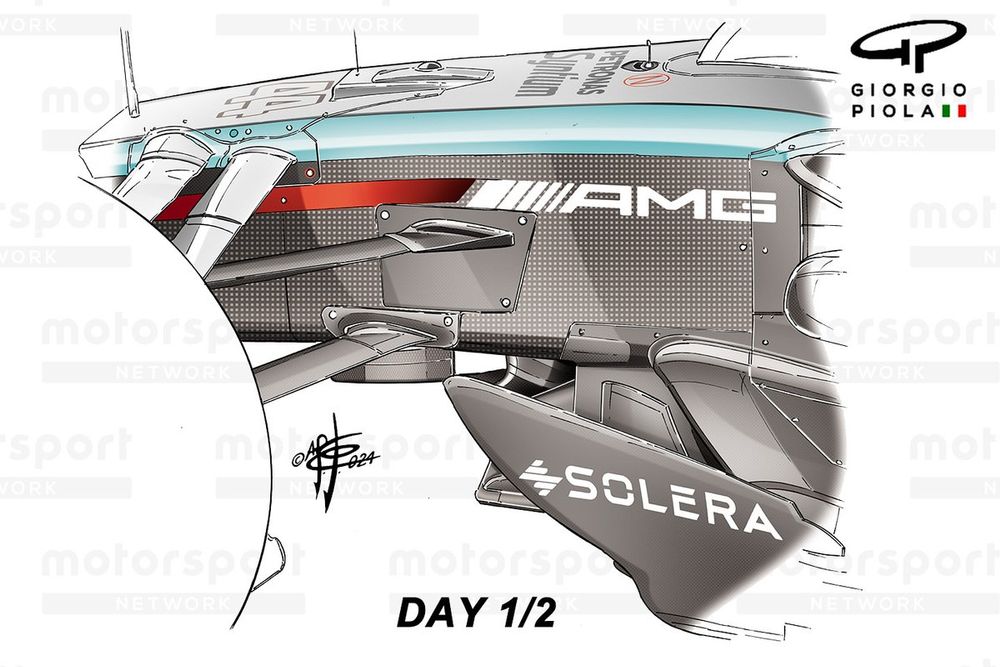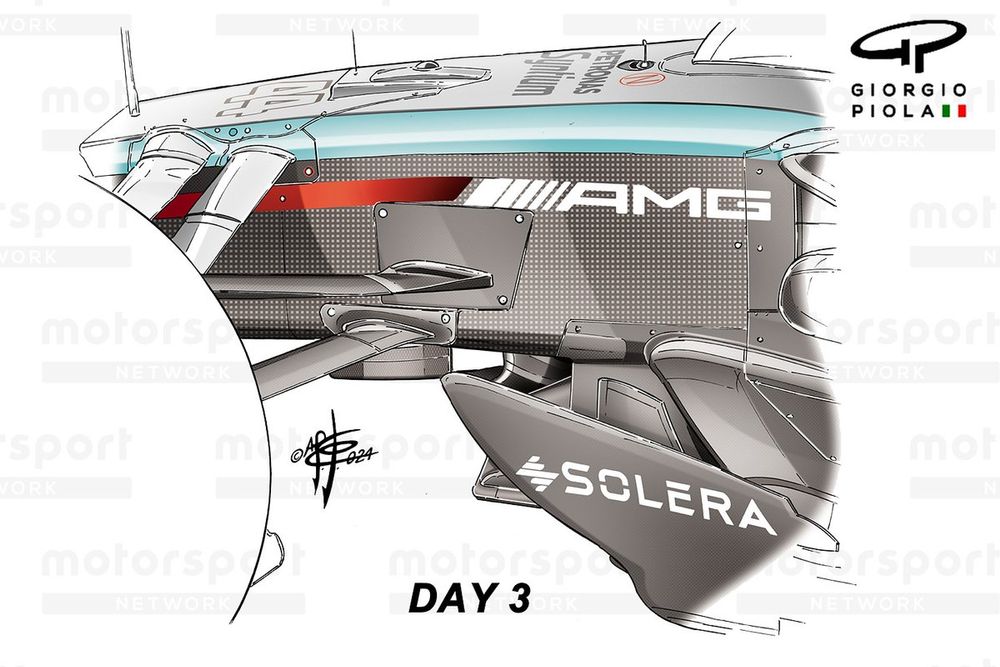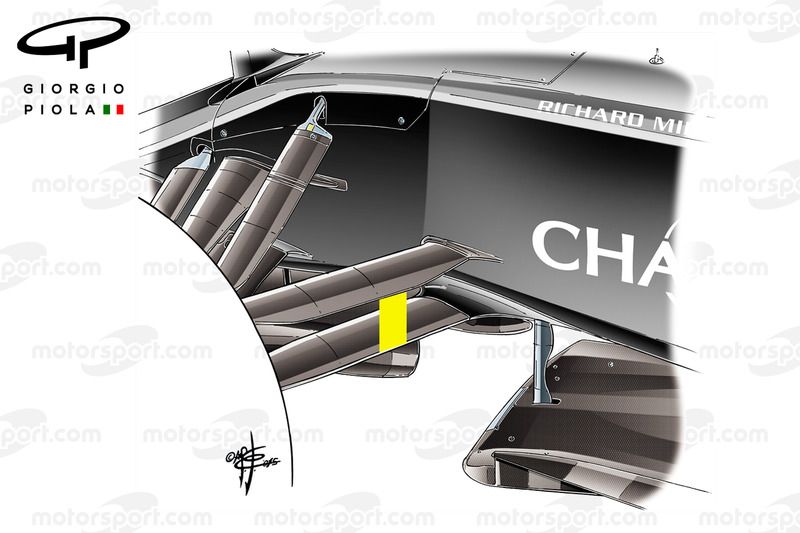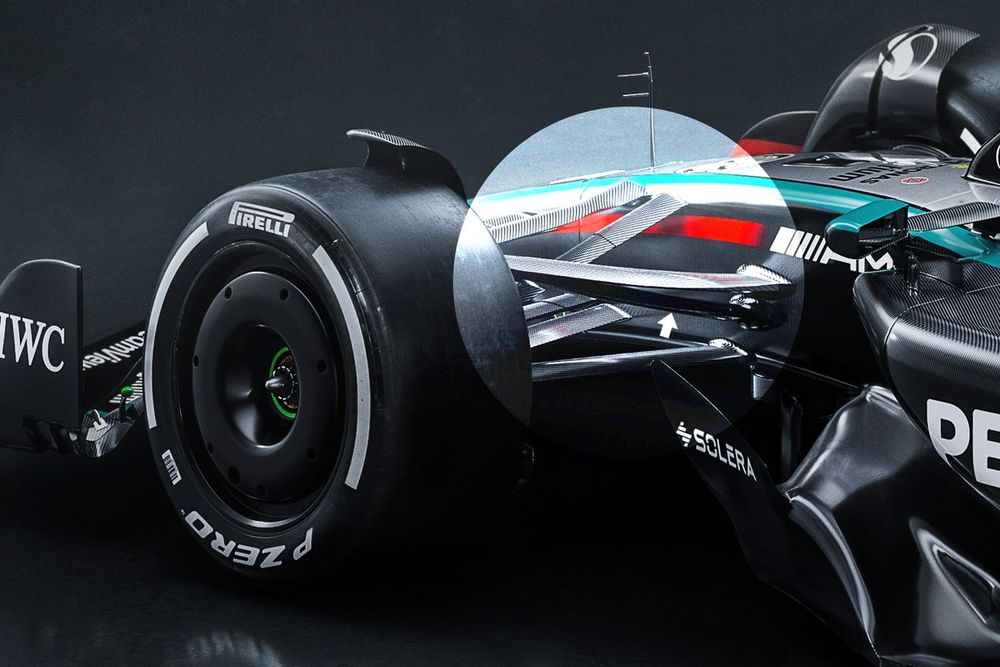At the time, it was believed that the Brackley-based outfit had done it as a diversionary pre-season tactic to throw rivals off the scent about what it was really up to. After all, teams aren’t allowed to fit redundant suspension elements on cars.
Mercedes W15 fake arm
Photo by: Mercedes AMG
It has turned out, however, that what the image actually showed was a clue to a new adaptable arrangement built into the Mercedes chassis and front suspension this year.
This design allows the team to move the inboard end of the suspension leg to better suit the requirements it needs for the optimum set-up around each track.
Most teams do have some level of freedom in this area, but usually it is about millimetres rather than the many centimetres of freedom that the solution on the W15 affords Mercedes.
As can be seen in the illustration, the hatch on the side of the W15’s chassis is larger than we are normally used to seeing.
It provides adequate room for different wishbone arrangements to be used, with the chosen location resulting in different kinematic plus aerodynamic responses from each.

Mercedes W15 front suspension detail
Photo by: Giorgio Piola

Mercedes W15 front suspension detail
Photo by: Giorgio Piola
During the pre-season test, Mercedes had the rear leg of the upper wishbone in the higher mounting position during day one and two. However, it moved it into a lower position for the third and final day to evaluate its merits.
The arm’s longitudinal position is altered by this change, with the arm moved forward relative to the position used in the first two days of the test.
The arrangement used on day three of the test places the rear legs of the upper and lower wishbones in much closer proximity to one another, with the pair likely becoming more effective as a combined aerodynamic surface in this layout.
This is not a totally new idea, with teams having looked at ways to couple these surfaces from an aerodynamic perspective in the past. McLaren’s MP4-31 is an example that springs to mind.
In that instance, McLaren did not have the adaptability built into its chassis to accommodate variability in the position of the wishbone, so a static position was utilised throughout the course of the season.

McLaren MP4-31 front suspension
Photo by: Giorgio Piola
But this is not just about delivering an aerodynamic benefit. The other obvious characteristic of this multiple mounting-point…
Click Here to Read the Full Original Article at Autosport.com – Formula 1 – Stories…

